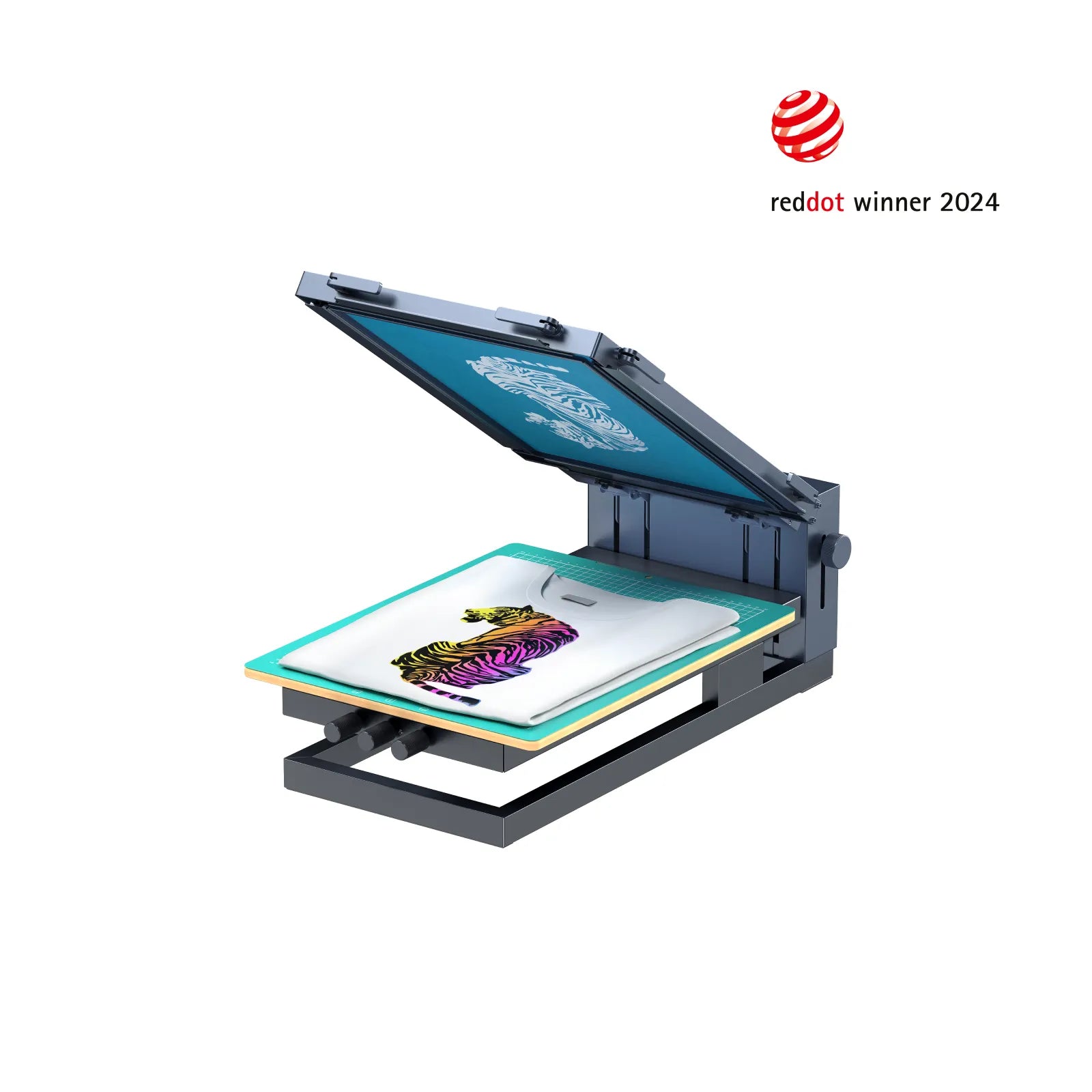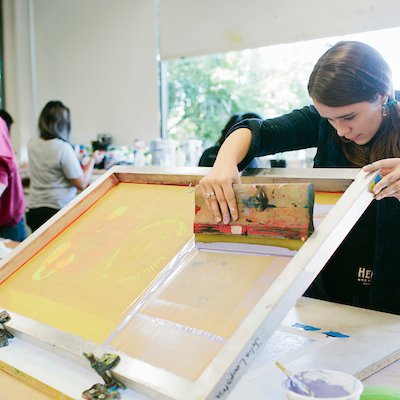The Crucial Guide to Understanding Screen Printing and Its Versatile Uses
Screen printing has an abundant background that dates back to old times, advancing right into an advanced technique used across numerous industries today. This overview discovers the details of the screen printing process, detailing its applications in advertising, style, and home décor - 10:9 Design Embroidery. Recognizing these fundamentals can open up creative possibility for both business and imaginative tasks. The complying with areas will certainly expose vital pointers and techniques to improve one's screen printing endeavors
The Background of Screen Printing
Although screen printing has roots that map back centuries, its advancement mirrors the technological and imaginative improvements of numerous societies. Coming from ancient China, the strategy was originally made use of for enhancing textiles and later infect Japan, where it came to be integral to Ukiyo-e woodblock printing. The approach changed to Europe in the 18th century, where it got appeal among craftsmens and commercial printers. The innovation of picture solution in the 20th century transformed screen printing, enabling for even more intricate layouts and greater efficiency. Artists like Andy Warhol further moved its popularity, using the medium to produce renowned jobs that mixed commercialism and art. By the late 20th century, screen printing had actually developed itself as a flexible strategy, utilized in vogue, advertising, and art. Today, it remains to progress, incorporating electronic technology and expanding its applications throughout different sectors.
The Screen Printing Refine Explained
Screen printing changes creative visions into tangible designs via a collection of precise actions. At first, a picture is produced and afterwards moved onto a screen, usually made of great mesh fabric stretched over a frame. A light-sensitive solution is put on the screen, which is subjected to light, setting in locations not covered by the photo. After cleaning out the unhardened solution, a stencil is formed.
Next off, the screen is placed over the substratum, whether it be fabric, paper, or an additional product. Ink is then pressed with the open areas of the pattern making use of a squeegee, transferring the style onto the substrate listed below. This procedure can be duplicated for numerous colors, needing different displays for each shade. Finally, the published product is cured making use of warmth to ensure the ink sticks correctly, causing a long lasting, lively design prepared for usage.
Sorts Of Screen Printing Techniques

In addition, specialty methods, such as discharge screen printing, eliminate color from the textile to create softer prints, while aluminum foil screen printing applies metallic aluminum foil to attain a glossy coating (10:9 Design LLC Company). Each strategy supplies distinctive attributes, providing to various innovative requirements and manufacturing ranges, eventually expanding the possibilities within the screen printing domain
Applications of Screen Printing in Different Industries

Furthermore, the signage and marketing industries use screen printing for producing eye-catching displays and banners. This approach allows for vibrant colors and elaborate styles that capture interest. In electronic devices, screen printing is utilized for applying conductive inks to circuit boards, necessary for element links. In addition, the home style sector embraces screen printing to produce distinct designs on fabrics and wall art. On the whole, screen printing acts as an essential tool across diverse areas, improving products with personalized and visually enticing graphics.
Tips for Successful Screen Printing Projects
While carrying out a screen printing project, cautious attention to detail can significantly improve the last result. Selecting premium products is essential; this includes the screen, inks, and substratums. Making use of appropriate mesh matters can affect ink deposition and information resolution. Preparation is similarly important; detailed cleansing of screens and correct exposure times ensure crisp prints.
Next off, exact registration is critical for multi-color prints. Using alignment tools can aid attain exact layering. Additionally, testing prints on scrap products before manufacturing helps determine potential issues without losing sources.

Frequently Asked Questions
What Products Are Finest for Screen Printing on Fabric?
Cotton and polyester blends are optimal for screen printing on textile as a result of their longevity and ink absorption. Additionally, specialty fabrics like silk or canvas can produce one-of-a-kind structures and finishes, improving the total style quality.
Exactly how Do I Tidy and Maintain Screen Printing Devices?
To preserve and clean screen printing equipment, one need to regularly wash screens with appropriate solvents, examine squeegees for wear, oil relocating components, and shop all items in a completely dry, dust-free setting to lengthen their life expectancy.
What Are the Environmental Influences of Screen Printing?
Screen printing can have considerable ecological influences, consisting of chemical waste from solvents and inks, water use throughout cleaning procedures, and energy consumption. Lasting techniques and green products are necessary for reducing these negative results.
Can Screen Printing Be Done in your home Properly?
Screen printing can be successfully done at home with the best products and techniques. Hobbyists can produce high quality prints, though success relies on their skill degree, devices, and understanding of the procedure entailed.
What Are the Costs Related To Starting a Display Printing Service?

Beginning a screen printing organization entails expenses for tools, products, and workspace. Preliminary expenses commonly vary from a few hundred to several thousand dollars, depending upon the scale, high quality of equipment, and wanted click here production ability.
Screen printing has a rich background that dates back to ancient times, evolving right into an advanced technique used throughout various industries today. Another technique, rotary screen printing, employs cylindrical screens, facilitating constant printing on fabric rolls, thereby improving effectiveness for massive productions. Additionally, specialized techniques, such as discharge screen printing, get rid of dye from the fabric to produce softer prints, while foil screen printing uses metallic foil to achieve a glossy coating. In the style market, screen printing is widely used to develop lively styles on apparel, enabling brands to display their unique designs. Cotton and polyester blends are ideal for screen printing on textile due to their resilience and ink absorption.